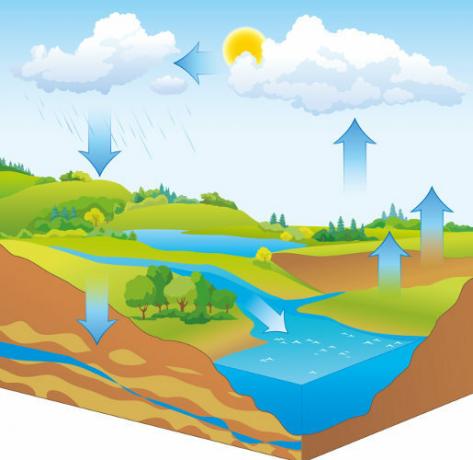An African nation bordering the Indian Ocean, Kenya shares borders with Somalia (to the east), Ethiopia (to the north), Sudan (to the northwest), Uganda (to the west) and Tanzania (to the west and south). The equator “cuts” the country in the central portion, making one part belong to the Northern Hemisphere and the other, to the Southern Hemisphere.
Kenya has beautiful natural landscapes: beaches, nature reserves with a wide variety of animals (wildfire, hyenas, zebras, lions, elephants, hippos, etc.), savannas, Mount Kenya (about 5,199 meters high) and the desert Chalbi.
These natural characteristics of the country attract thousands of tourists, which, together with agriculture, is the main economic activity. Rural activities are responsible for employing more than 70% of Kenyans. The most expressive crops are: corn, wheat, soy, cassava, onion, cotton, orange, banana, potato and especially tea and coffee, which are the two main export products.
Kenyans, like most people in sub-Saharan Africa, face a number of socio-economic problems. According to 2010 data released by the United Nations (UN), the country has an Index of Human Development (HDI) of 0.470, occupying 128th place in the world ranking, which comprises 169 nations. More than half of the population lives below the poverty line; malnutrition affects 32% of Kenyans and the infant mortality rate is 62 per thousand live births.
Do not stop now... There's more after the advertising ;)

Zebras in a Kenya Nature Reserve
Kenya Data:
Territorial extension: 580,367 km².
Location: Africa.
Capital: Nairobi.
Climate: Equatorial (coastal), and altitude equatorial (inland).
Government: Presidential Republic.
Administrative division: 8 provinces.
Languages: Swahili (official), English, Kikuyu, Luo.
Religions: Christianity 80.7% (Catholic 24.4%, Independent 20%, Protestant 32.6%, Other 3.7%), Traditional Beliefs 11.1%, Islam 7%, Other 1.1% with no religion and atheism 0.1%.
Population: 39,802,015 inhabitants. (Men: 19,895,274; Women: 19,906,741).
Composition: Kikuios 21%, luias 14%, luos 13%, cambas 11%, calenjins 11%, quisis 6%, merus 5%, other 19%.
Demographic density: 68.5 inhab/km².
Average annual population growth rate: 2.6%.
Population residing in urban areas: 21.86%.
Population residing in rural areas: 78.14%.
Undernourished population: 32%.
Life expectancy at birth: 52.7 years.
Households with access to drinking water: 57%.
Households with access to the health network: 42%.
Human Development Index (HDI): 0.470 (low).
Currency: Kenyan Shilling.
Gross Domestic Product (GDP): $34.5 billion.
GDP per capita: $786.
External relations: World Bank, Commonwealth, IMF, WTO, AU.
By Wagner de Cerqueira and Francisco
Graduated in Geography
Brazil School Team
countries - geography - Brazil School



